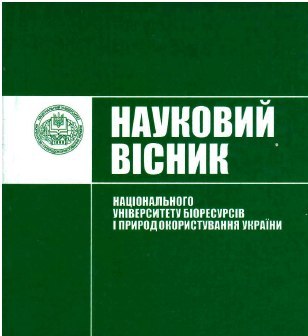Specific features of translation of technical literature
DOI:
https://doi.org/10.31548/philolog0(276).2017.042%20-%2047Abstract
The main features of technical translation are analysed. Transfer of technical literature should be considered both with linguistic and on scientific and technical positions. Features of gradation of technical literature are presented and it is noted that scientific and technical literature is designed for the expert in the field of knowledge (or is going to specialize in it), that is according to the contents is guided by a narrow circle of people. Use of many scientific and technical terms, that is the words or phrases designating scientific or technical concepts is characteristic of dictionary structure of scientific and technical literature. It is considered that a condition in the choice of the correct value of the multiple-valued term when translating the context is decisive.
Identification of objective regularities of the translation of scientific and technical literature as self-contained discipline needs to be carried out on the basis of the analysis of the actual material of separate languages, proceeding from original positions: restriction of a research with a framework of the natural and exact sciences; identification of the common language regularities, to the available these fields of science and technology, will allow to define consciously the choice of lexical and grammatical tools when translating, to replace an intuitive guess with the translation
based on logic of the language facts; disclosure of not studied language regularities as a result of the analysis of a ratio of separate pairs of languages in translation process, have to make a particular contribution to the common linguistics; enrichments, systematization and rationalization of language of science and technology on the basis of the linguistic analysis in the commonwealth with experts in certain areas of science and technology; development of the common translation theory as certain area of linguistics.
We need the deep linguistic studying of theory and practice of translation of scientific and technical literature and importance of the solution of questions of transfer not only is noted by a linguistic way, but also cooperation with experts of this science and technology.
References
Barkhudarov, L.S. i dr. (1967). Posobye po perevodu tekhnycheskoi lyteratury [Book on the translation of technical literature]. M.: Vysshaia shkola, 283.
Dolmatovskaia, E.Iu. (1979). Metodyka obuchenyia termynolohyy po spetsyalnosty v neiazykovom vuze [Technique of training of terminology in the specialty in not language higher education institution]. M.: Vysshaia shkola, 204 .
Levytskaia, T.R., Fyterman A.M. (1976). Problema perevoda. Na materyale sovremennoho anh. yazyka [Translation problem. On material of modern English]. M., Mezhdunarodnye otnoshenyia, 205 .
Panko, T.I., Kochan I.M., Matsiuk H.P. (1994). Ukrainske
terminoznastvo [Ukrainian term knowledge]. Lviv: Svit, 216.
Pumpianskyi, A.L. (1981).Vvedenye v praktyku perevoda nauchnoi i tekhnycheskoi lyteratury na anhlyiskyi yazyk [Introduction to translation practice of scientific and technical literature into English]. M.: Nauka, 344 .
Tarnopolskyi O.B. (1989). Metodyka obuchenyia anhlyiskomu yazyku na I kurse tekhnycheskoho vuza [Technique of training in English at the I course of technical educational institution]. K.: Vyshcha shkola, 200.
Shynkaruk, V.D. (2016) Otsinnyi komponent v leksychnomu znachenni slova [The evaluative component in the lexical meaning of the word]. Scientific Herald of National University of Life and Environmental Sciences of Ukraine.Series: Philological Sciences Herald, Kyiv, Vyp.248,P.6-14
Downloads
Published
Issue
Section
License
Relationship between right holders and users shall be governed by the terms of the license Creative Commons Attribution – non-commercial – Distribution On Same Conditions 4.0 international (CC BY-NC-SA 4.0):https://creativecommons.org/licenses/by-nc-sa/4.0/deed.uk
Authors who publish with this journal agree to the following terms:
- Authors retain copyright and grant the journal right of first publication with the work simultaneously licensed under a Creative Commons Attribution License that allows others to share the work with an acknowledgement of the work's authorship and initial publication in this journal.
- Authors are able to enter into separate, additional contractual arrangements for the non-exclusive distribution of the journal's published version of the work (e.g., post it to an institutional repository or publish it in a book), with an acknowledgement of its initial publication in this journal.
- Authors are permitted and encouraged to post their work online (e.g., in institutional repositories or on their website) prior to and during the submission process, as it can lead to productive exchanges, as well as earlier and greater citation of published work (See The Effect of Open Access).

